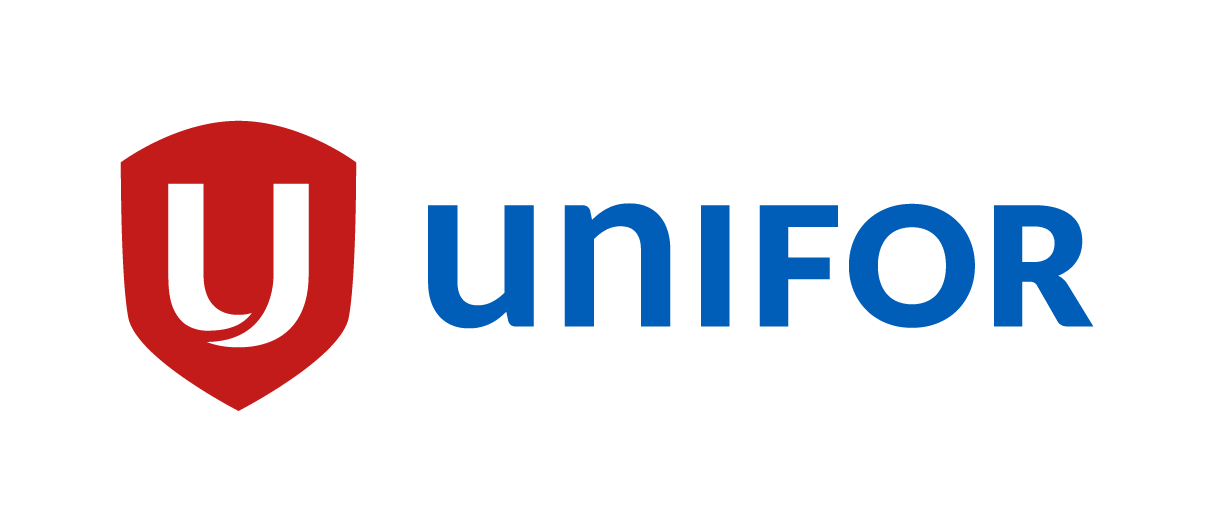Patrick Halley
Assistant Deputy Minister
Finance Canada
Michael Mosier
Director, International Trade Policy Division
Department of Finance
Cassidy McGraw
Analyst, International Trade Policy Division
Department of Finance
Re: Section 53 China Electric Vehicle Surtax Review
Greetings,
As the Government of Canada undertakes its review of the 2024 China Electric Vehicle Surtax Order, I submit to you the following commentary on behalf of Unifor, Canada’s predominant autoworkers union, representing more than 40,000 workers employed in light and heavy duty vehicle and powertrain assembly, vehicle parts production including battery cell manufacturing and battery packing, aftermarket distribution, logistics, clerical and engineering as well as vehicle sales and service.
In August 2024 Unifor submitted to the Department of Finance a report supporting a proposal to invoke section 53 of the Customs Tariff, imposing a 100% surtax on electric vehicles imported to Canada from the People’s Republic of China. The China EV surtax was justified on the grounds that unfair Chinese competition and rising import penetration posed a pressing threat to Canada’s homegrown ZEV supply chain and responded to rising concerns over systemic international labour violations in China.
Canada has positioned itself for industrial growth in the ZEV industry, from the mining of critical minerals to the assembly of electric vehicles and recycling. Following decades of automotive production capacity decline and factory closures, Canada had secured more than $50bn in factory and assembly program investments since 2020, mostly tied to first generation electric vehicles and component production. As a result, leading industry forecasts in 2024 projected an impressive 37% increase in vehicle production by 2031, with expectations of associated EV supply chain expansions from critical mining to precursor materials to battery production. This impressive investment, industrial capacity (including greenfield factories) and job growth potential was made possible through government’s EV-focused ‘Mines to Mobility’ industrial strategy, backed by public investments and other funding commitments.
China, as the most advanced competitor nation to Canada for future-facing electric vehicles, components and critical minerals, has developed its domestic industry using a mix of active industrial policy, government subsidies and ‘structural overcapacity’. Chinese firms benefit from unfair (and internationally condemned) practices, such as forced labour and the suppression of workers’ rights. China’s over-reliance on high-emitting energy sources, such as coal power, undermine the GHG-reducing benefit of on-road ZEVs. Chinese firms, like BYD, tailor production toward export markets because of state-directed policy bolstering domestic supply, without commensurate supports for consumer demand. For these reasons, Unifor also extended its support for the imposition section 53 surtaxes on Chinese steel and aluminum and clean technology goods.
There was good reason for Canada to invoke the China EV surtax - effectively deterring importation of unfair Chinese-made vehicles from the Canadian market – and there is good reason to maintain those surtaxes today. The use of section 53 provided an appropriate and timely response to the urgent threat posed by Chinese automakers eager to gain a toehold in the North American sales market.
It is crucial that the federal government maintain the China EV surtax order. Not only are the same unfair competitive market conditions underlying the initial 2024 order still present, but the economic climate facing the Canadian automotive industry has also worsened in the past 12 months.
First, automotive tariffs imposed on Canada by the United States present an existential threat to domestic automotive production. Punitive tariffs imposed on Canadian vehicle exports (and the Canadian-built component parts within those vehicles) raise concerns about the viability of export-dependent assembly facilities, employing tens of thousands of workers directly, and supporting a constellation of associated supplier firms.
Second, major disruptions to U.S. EV policies have altered the trajectory of EV sales and assembly programs in North America. This includes Trump Administration changes to fuel economy regulations (i.e. removing penalties for automakers failing to meet fleet-wide fuel standard targets), halting EV infrastructure spending (only to later reinstate it), challenging the authority of U.S. states to establish EV sales requirements, and eliminating the federal EV consumer rebate program (not unlike Canada’s decision to end the iZEV program earlier this year).
These three intersecting challenges (i.e. China imports, persistent U.S. tariffs, shifting EV market dynamics) reflects a dire situation for a heavily integrated auto industry – and a critical driver of jobs and economic prosperity. As of August 2025, approximately one-third of Unifor members at Detroit-3 facilities in Canada were on layoff, with 3 assembly plants currently idle.
Removing the China EV surtax, Canada’s best safeguard against unfair Chinese imports, will have an immediate impact on market share and EV sourcing decisions. To measure the danger, we need look no further than China’s market impact on other automaking nations. Chinese-branded automakers have doubled their market share across the European Union (despite EU anti-dumping tariffs imposed after market access was granted). Floods of Chinese vehicles are upending the auto industries of Brazil, Indonesia and elsewhere. In Mexico, Chinese imports have increased rapidly, now representing 1 in 5 total vehicle sales across the country, and a 70% share of the Mexican EV market.
In recent days, the Mexican government decided to increase import tariffs on Chinese vehicles to 50%, in part to better contain import flows and safeguard the Mexican industry. The United States maintains its tariff policy on Chinese EVs, totalling 127.5% (MFN + section 301 + IEEPA), and is expected to initiate a partial ban on Chinese ‘connected car’ technology taking effect in 2027. It is therefore incumbent on Canada to maintain its China EV surtax, at the very least to ensure alignment with CUSMA trading partners, and to avoid Canada serving as a North American dumping ground for Chinese imports. There is every reason to believe that confronting Chinese import penetration, on both economic and national security grounds, will feature in the forthcoming six-year CUSMA review. There is no strategic advantage for Canada to chart a different path than the U.S. and Mexico at the present time.
Conclusion and Recommendations
Amid an existential crisis, the federal government has taken initial steps to protect the Canadian auto industry and the jobs of auto workers. Improvements to income security through EI, promised investments through the Strategic Response Fund, enhanced capital liquidity supports and a tariff remission scheme to hold corporations accountable to their investment commitments, are all important initiatives that Unifor welcomes. Government has defended the domestic industry against external forces, outside of our control. Lifting the China EV surtax – against the backdrop of an exceptional crisis – would be nothing more than a self-inflicted wound, creating new vulnerabilities for the sector at the worst possible time.
I urge the federal government to maintain a coherent industrial strategy, one focused on building a more self-reliant economy, filled with good, union jobs, and that ensures our net zero future is made in Canada. I also urge the federal government, in the course of this surtax review, to reflect on the unresolved recommendations Unifor made in its initial submission in 2024 – recommendations intended to reconcile a troubling trade relationship with China that remains inconsistent with Canada’s stated defence of international labour and human rights standards.
Recommendations:
Maintain the existing China EV Surtax order - a 100% surtax on imported Chinese electric vehicles for an additional 24 months.
Extend the Section 53 surtax to strategic EV and battery-related components (25% above the MFN rate) of importance to Canada, including electric motors and drive unit components (including magnets, sensors and actuators), as well as key battery cell components, including cathode active material, anodes, separators, and electrolytes.
Establish a monitoring and analysis committee, involving industry experts, to assess impacts on trade flows, transshipments, import surges and market prices in new energy vehicles from China and Chinese automakers resulting from the myriad actions taken by Canada and other nations.
Require future vehicle product program investments made by automakers, that receive public funding, whether through special programs, financial instruments, or tax credits must be electrified vehicle programs or include electrified variants of internal combustion engine program or a multi-energy program architecture.
Reinstate the Incentives for Zero Emission Vehicles (iZEV) program and commit to extending the Incentives for Medium- and Heavy Duty Zero Emission Vehicles (iMHZEV) program until at least March 31, 2030, and March 31, 2031, respectively. Increase the maximum rebate of the iZEV program by an additional $5,000, on condition the vehicles are assembled in Canada or meet North American content requirements under CUSMA and disqualify any vehicle from the iZEV and iMHDZEV programs that is subject to a surtax under Section 53 of the Customs Tariff.
Pursue policies that expand domestic vehicle production by leveraging government-funded purchases of vehicles, including by assigning local content and final assembly requirements to major public vehicle fleet and transit procurements, where possible.
Issue guidance to CBSA and ESDC Labour Program officials, regarding the evidentiary proof required to invoke prohibitions on goods produced with forced labour under the Customs Tariff. The directive must enable CBSA to confront goods suspected of forced labour, issue Withhold Release Orders and require importers and/or suppliers to demonstrate compliance with Canadian law.
I would be happy to discuss any of these recommendations with you further, if required.
Sincerely,
Lana Payne
National President


